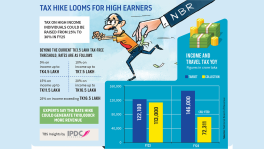How to invest during trade war turmoil
Kaplan recommended buying S&P 500 options, call options on stocks and sector exchange traded funds hardest hit by trade escalation to benefit from a possible rebound.

The start-and-stop progress of negotiations between the United States and China aimed at ending the trade war between the world’s two largest economies is souring Wall Street playbooks and increasing market volatility as investors seek to profit during the uncertainty.
Investors are now focused on Sept. 1, when the first stage of US tariffs on $300 billion worth of Chinese goods is scheduled to go into effect. In response, China unveiled tariffs on US products ranging from soybeans to autoparts to small aircraft that are set to go into effect the same day.
Global stock markets rallied Monday after President Donald Trump said he expects to see a trade deal, then fell Tuesday after China’s foreign ministry said it had not received any recent phone calls from the United States on trade.
Here are how some on Wall Street are navigating the trade dispute:
1) Phil Orlando, portfolio manager and chief equity market strategist at Federated Investors in New York, said the prospects of drawn-out trade discussions prompted him to lower his equity overweight from 8% to 3% in July.
“To some degree Trump is using Chinese trade issues as a means of trying to extract additional cuts from the Fed to bring interest rates down, believing that at some point in the future he has the ability to sit down with the Chinese and pull a deal together,” he said.
If that were to occur, Orlando would move into an overweight into sectors like auto parts and agricultural that have been the focus on Chinese tariffs.
2) Jack Ablin, chief investment officer at Cresset Capital Management in Chicago, said his firm reduced risk earlier this year.
“We are feeling pretty good about our reduced-risk position, obviously the risk is we have some sort of a market melt-up. But the likelihood of a market melt-up seems small given where valuations are, where yields are and where expectations are.”
3) Mark Haefele, global chief investment officer, global wealth management, at UBS AG, wrote in a research note this week: “Downside risks are increasing for both the global economy and markets. As a result, we are reducing risk in our portfolios by moving to an underweight in equities to lower our exposure to political uncertainty.”
4) Strategists at JP Morgan say they are “nearing the time to add back risk” as they see a chance that the latest tariffs will not be implemented.
“While we have been advocating a consolidation call during August, we continue to expect that the pullback will not extend for longer than the May one did, and still believe that the market will advance into year-end, starting with a September upmove, as originally envisaged.”
Among the positives expected are “with respect to tariffs, with a chance of the latest ones not being implemented after all.”
5) Derivatives strategists at JP Morgan suggested using equity options as a way to benefit from either an improvement or further deterioration in trade tensions.
“Current weak positioning and sentiment could turn around quickly on positive trade developments, and drive significant market upside,” strategist Bram Kaplan said in a note on Tuesday.
Kaplan recommended buying S&P 500 options that make money in the event of a market rebound. He also recommended buying call options on stocks and sector exchange traded funds (ETFs) hardest hit by trade escalation to benefit from a possible rebound.
For companies that have so far largely escaped a hit from tariffs but remain vulnerable to a fresh round of tariffs in December, the strategists recommended buying December put options. These companies include Nike (NKE.N), Estee Lauder (EL.N) and Illinois Tool Works (ITW.N), according to JP Morgan.


 Keep updated, follow The Business Standard's Google news channel
Keep updated, follow The Business Standard's Google news channel
















